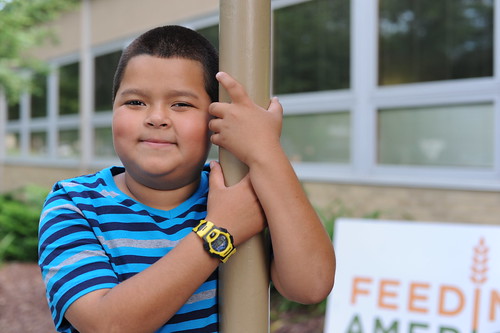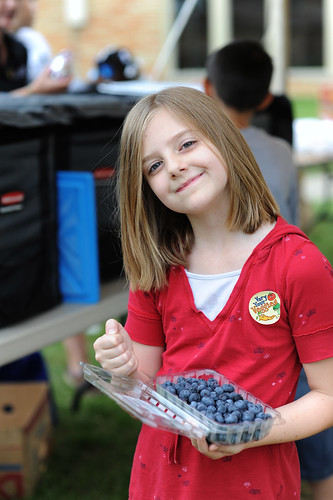
During March, National Nutrition Month®, USDA will highlight various nutrition topics that are near and dear to our hearts. We don’t work on these issues alone however. This guest blog post acknowledges one USDA National Strategic Partner, Feeding America, for the outstanding work they do to address childhood hunger and food insecurity and promote MyPlate. Learn more below:
By Jessica Hager, MA in Social Service Administration, Nutrition Coordinator, Feeding America
Good nutrition, particularly in the first three years of one’s life, is important for establishing a good foundation that has implications for future physical and mental health, academic achievement and economic productivity. Unfortunately, food insecurity is an obstacle that threatens that critical foundation.
According to the United States Department of Agriculture (USDA), 15.9 million children—1 in 5—under the age of 18 in America live in households where they are unable to consistently access enough nutritious food necessary for a healthy life (Household Food Security in the United States in 2012. Table 1B.USDA ERS.) Additionally, Feeding America’s Map the Meal Gap 2013 research found that 20 percent or more of the child population in each of 37 states and D.C. live in food-insecure households (Map the Meal Gap 2013, Feeding America).
Food insecurity is harmful to any individual, but it is important to note the particularly devastating effects of hunger among children due to their increased vulnerability and the potential for long-term consequences.
Feeding America, the nation’s leading domestic hunger-relief organization and Strategic Partner of USDA’s MyPlate, addresses child food insecurity through targeted programs like Kids Cafe, BackPack Program and Child Hunger Corps. These interventions are in addition to food distributions that occur at 61,000 network pantries and kitchens in communities across the country. Together, the Feeding America network provides food to 14 million children and their families each year.
The Child Hunger Corps is a two-year Feeding America service program funded by the ConAgra Foods Foundation that increases the capability of food banks to serve programs targeted at ending child hunger. The program launched in 2010 and to date, 32 talented corps members have been placed at host food banks. Corps members help their food banks connect with USDA programs like the Summer Food Service Program and the Child and Adult Care Food Program, making sure hungry kids have access to the nutritious meals they need to lead a healthy, active life.

During National Nutrition Month®, I encourage you to take the opportunity to engage in efforts addressing child food insecurity by visiting the Healthy Food Bank Hub, an initiative developed in partnership with two other MyPlate Partners, the Academy of Nutrition and Dietetics and National Dairy Council.
Through this partnership and engagement among our respective networks, we are working to enhance efforts that more holistically meet the complex needs of children and individuals living at risk of hunger. The Healthy Food Bank Hub hosts child-specific recipes and nutrition education materials, as well as educational information, an interactive forum, strategies, tools and resources. To further support our strategic partnership with MyPlate, we also host MyPlate-specific tools and resources that cater to those who are at risk of hunger.
Feeding America Facts* for National Nutrition Month
- 67 percent of the food distributed by the network is categorized as Foods to Encourage, a nutrition-focused framework based off USDA’s MyPlate and 2010 Dietary Guidelines.
- More than 79 percent of Feeding America food banks provide nutrition education, and many utilize an array of MyPlate information and materials throughout their efforts.
- More than 60 food banks report working with registered dietitians.
*Source: Feeding America
Together we can end hunger!

